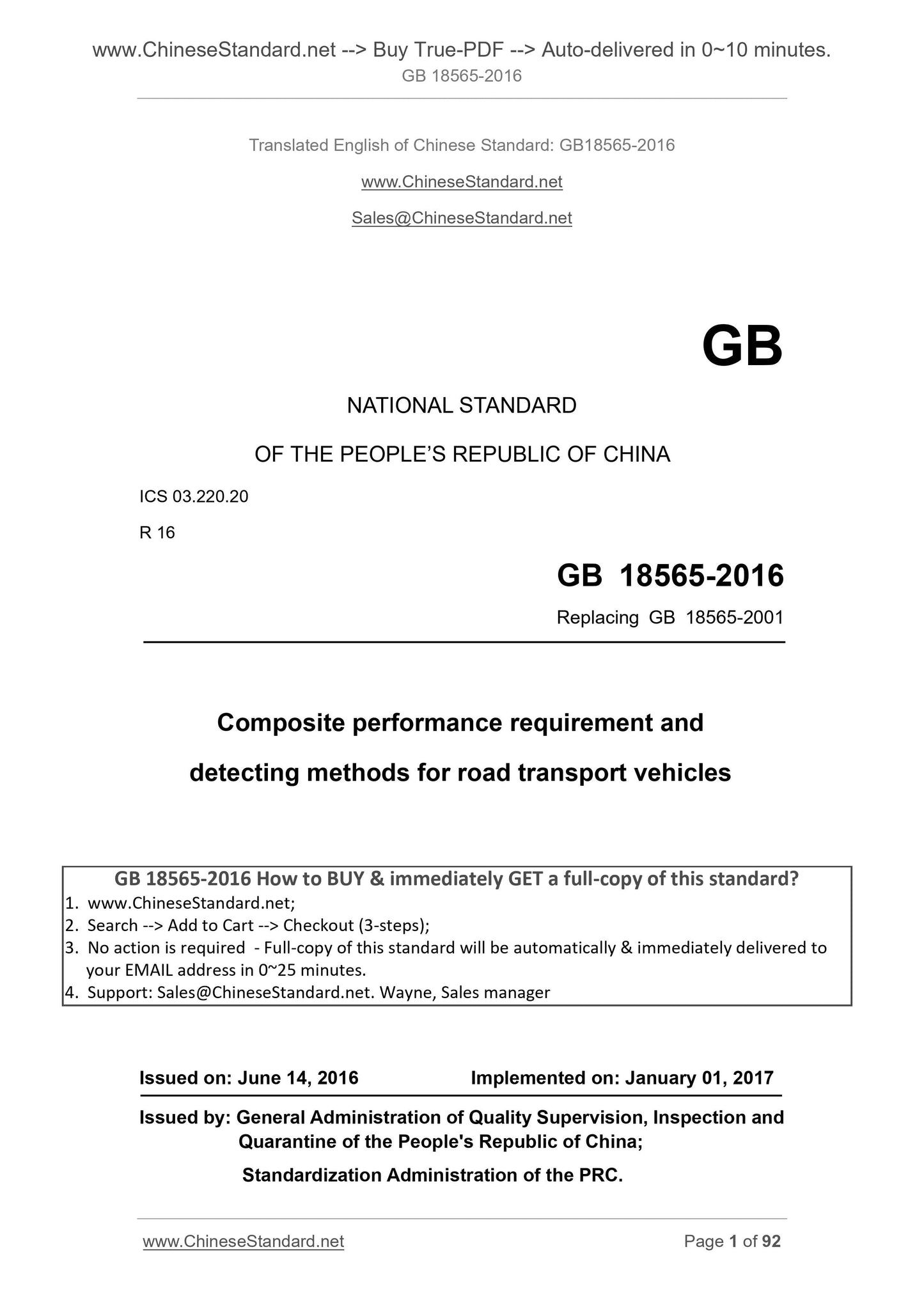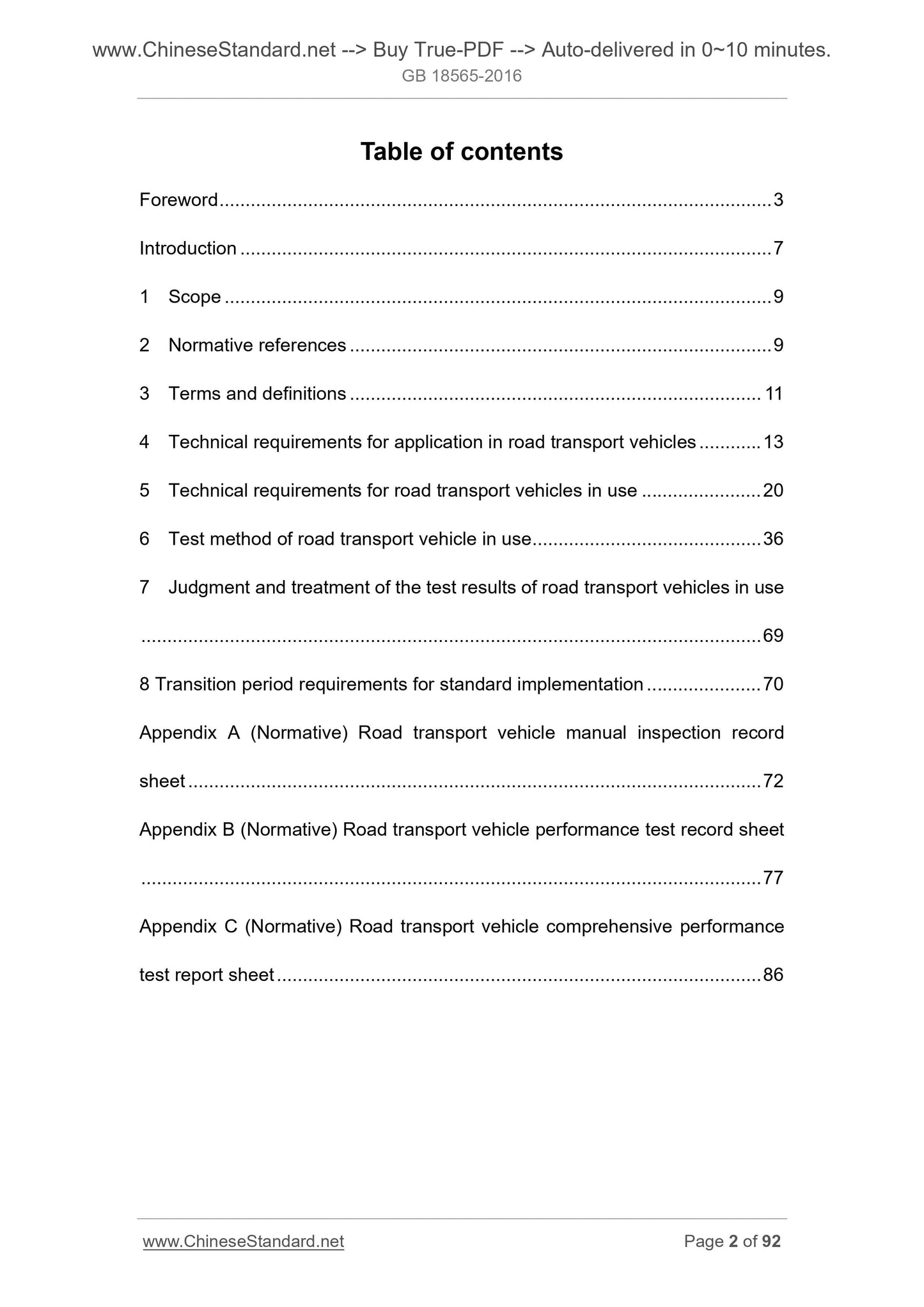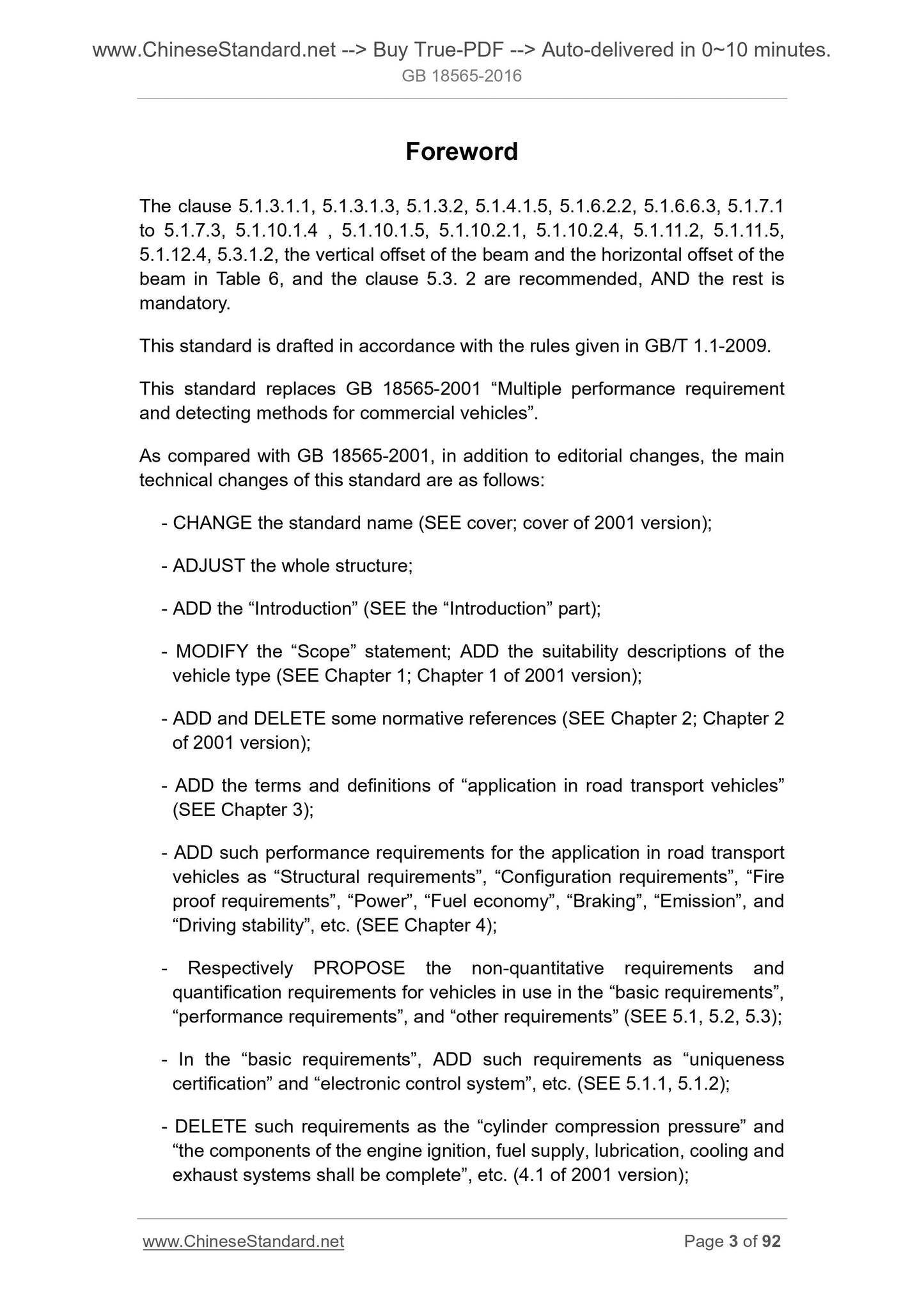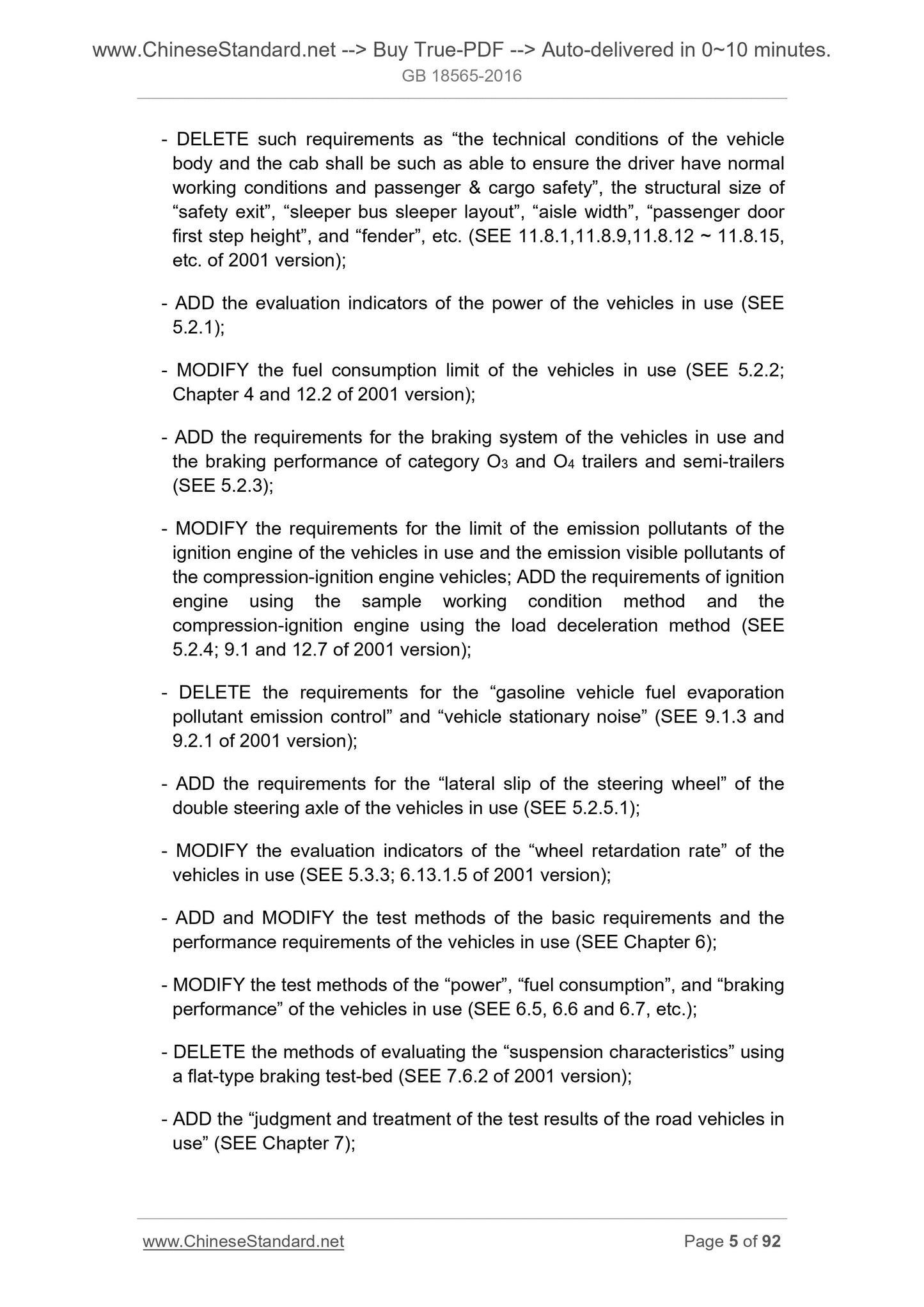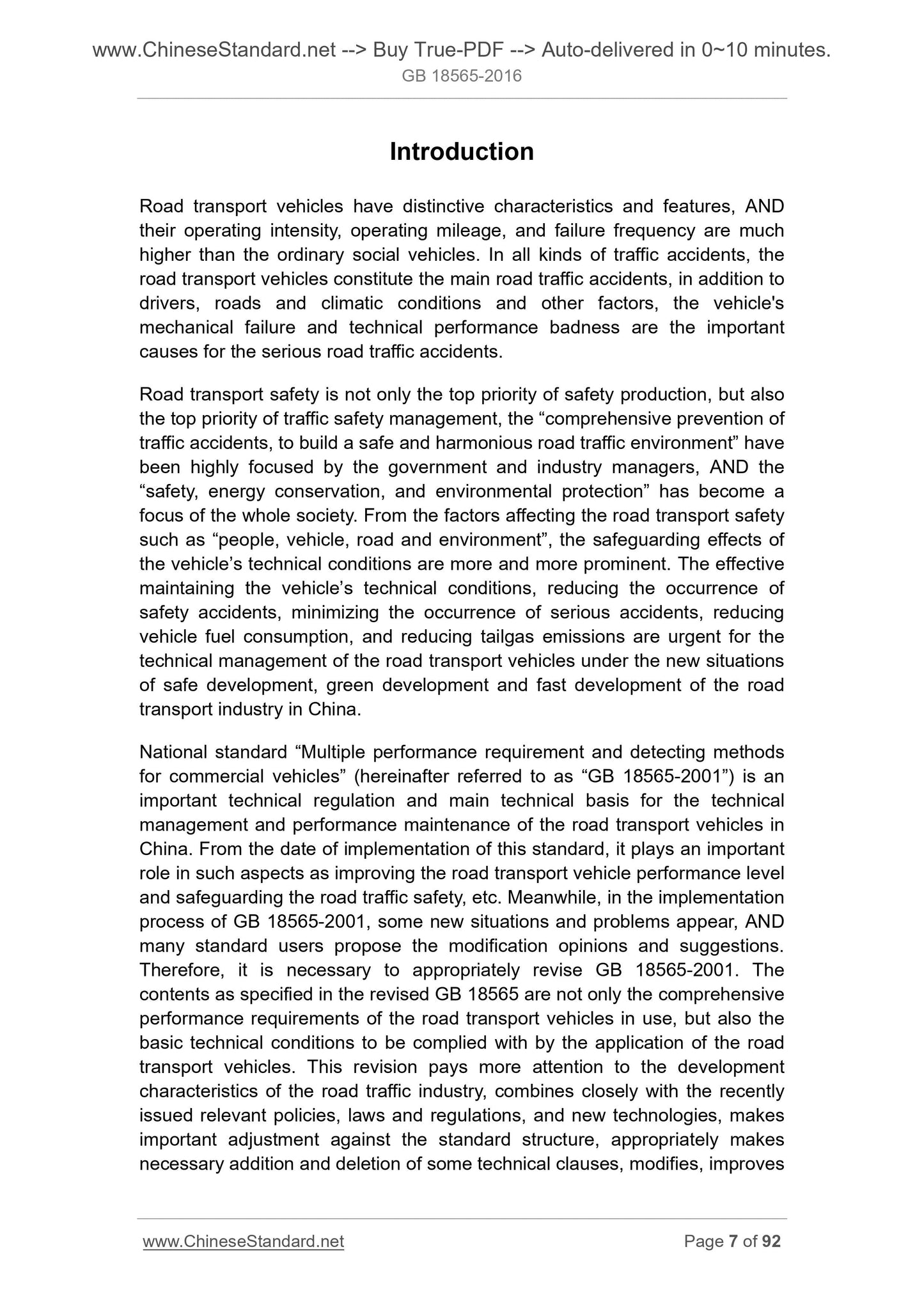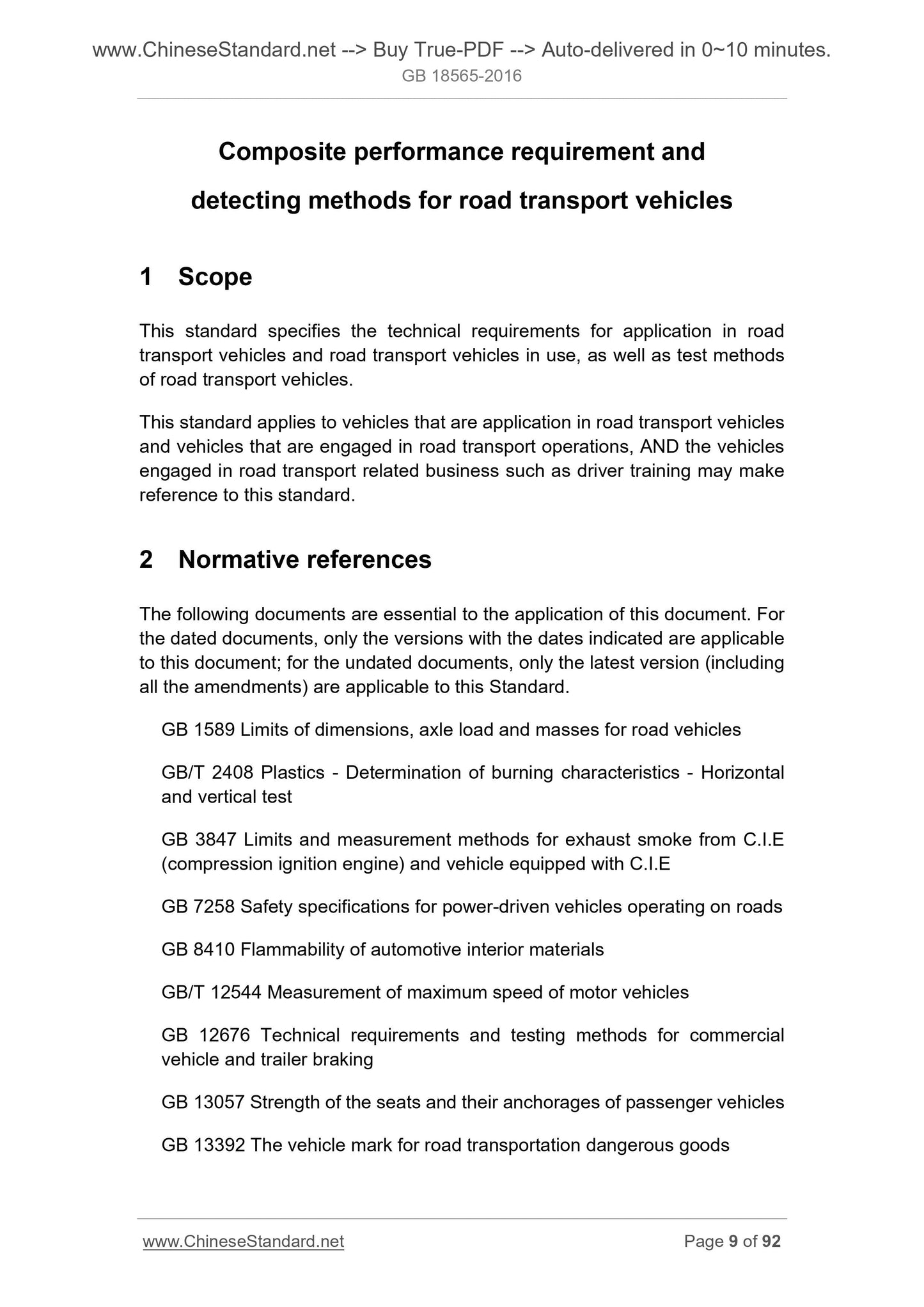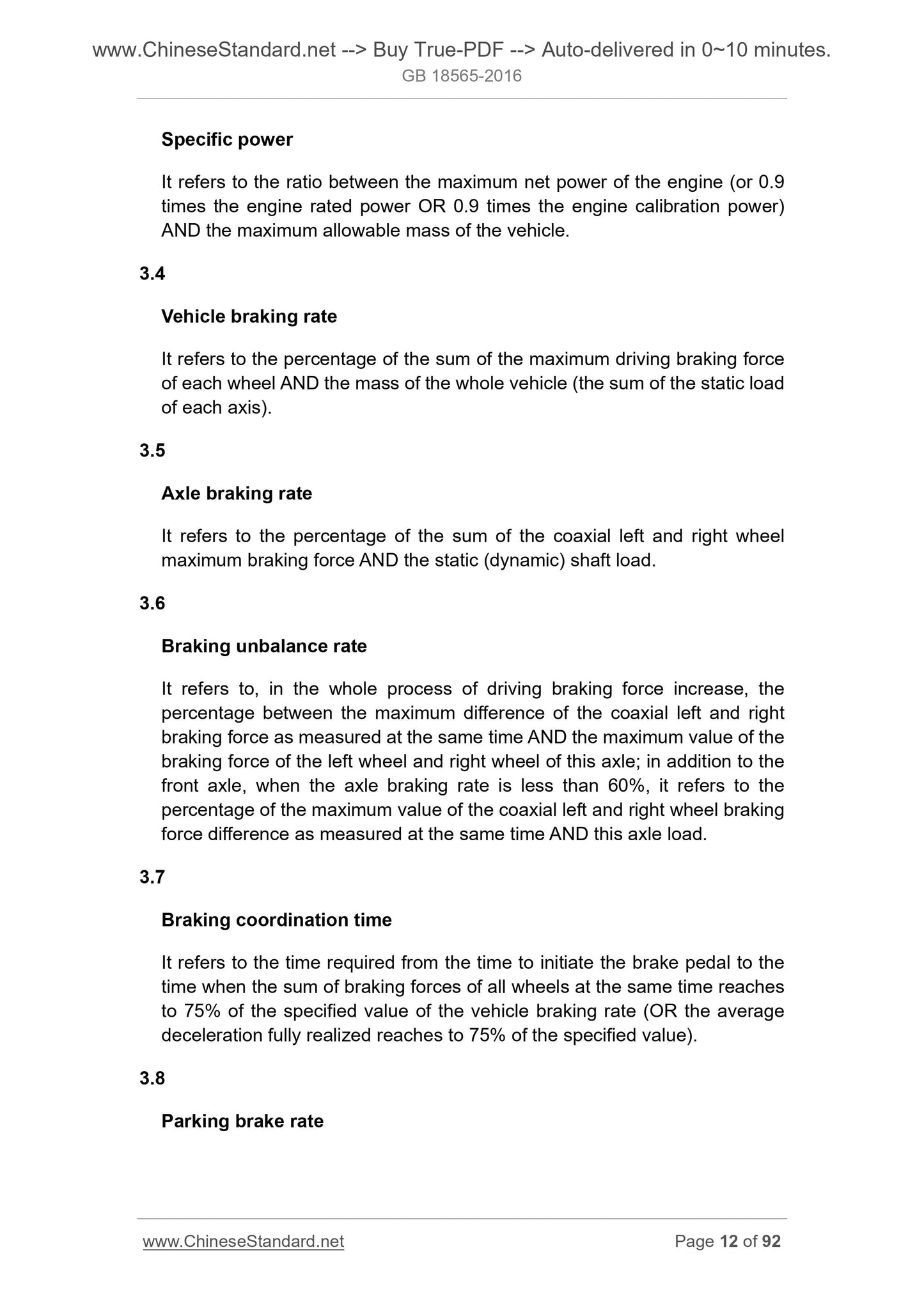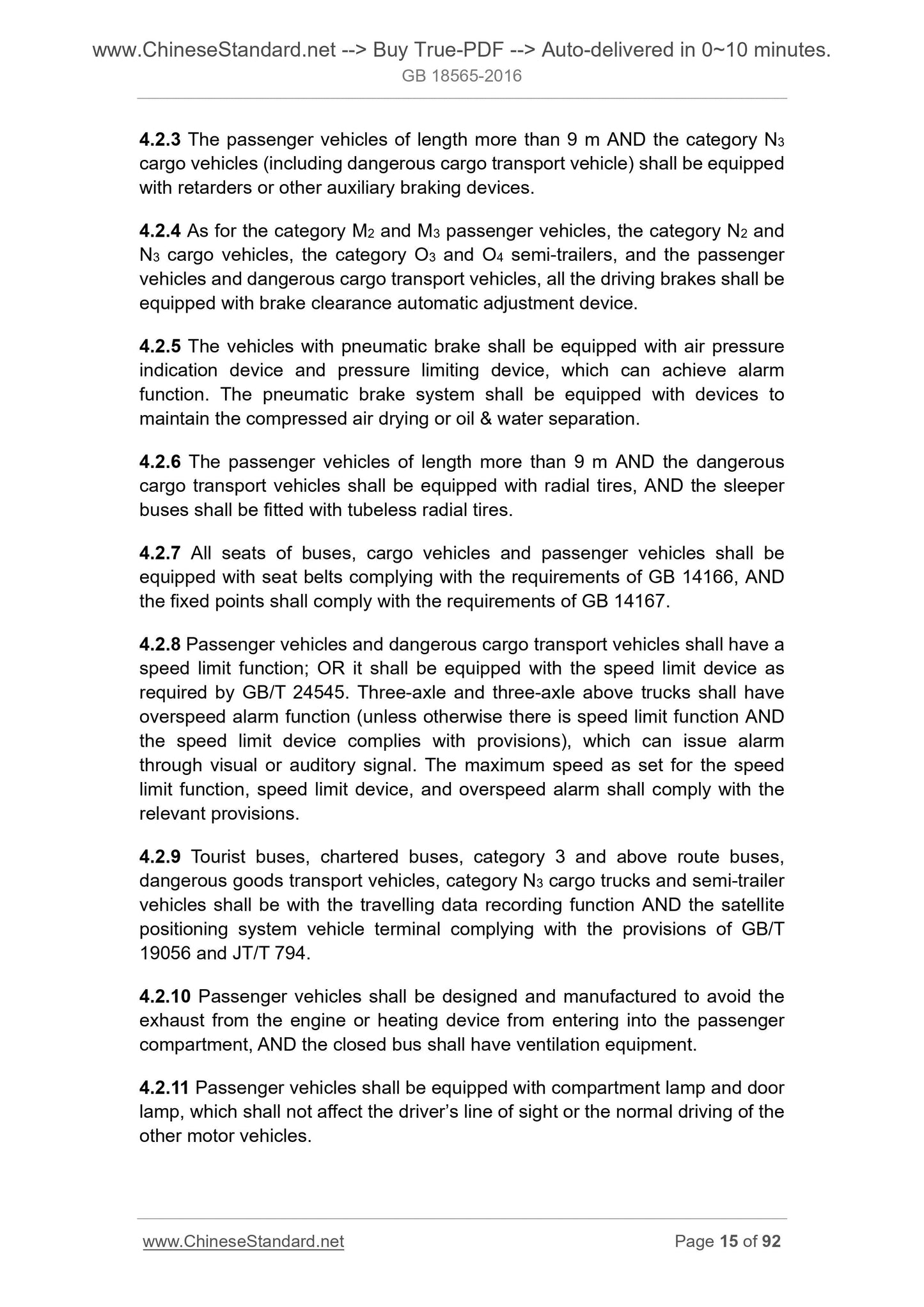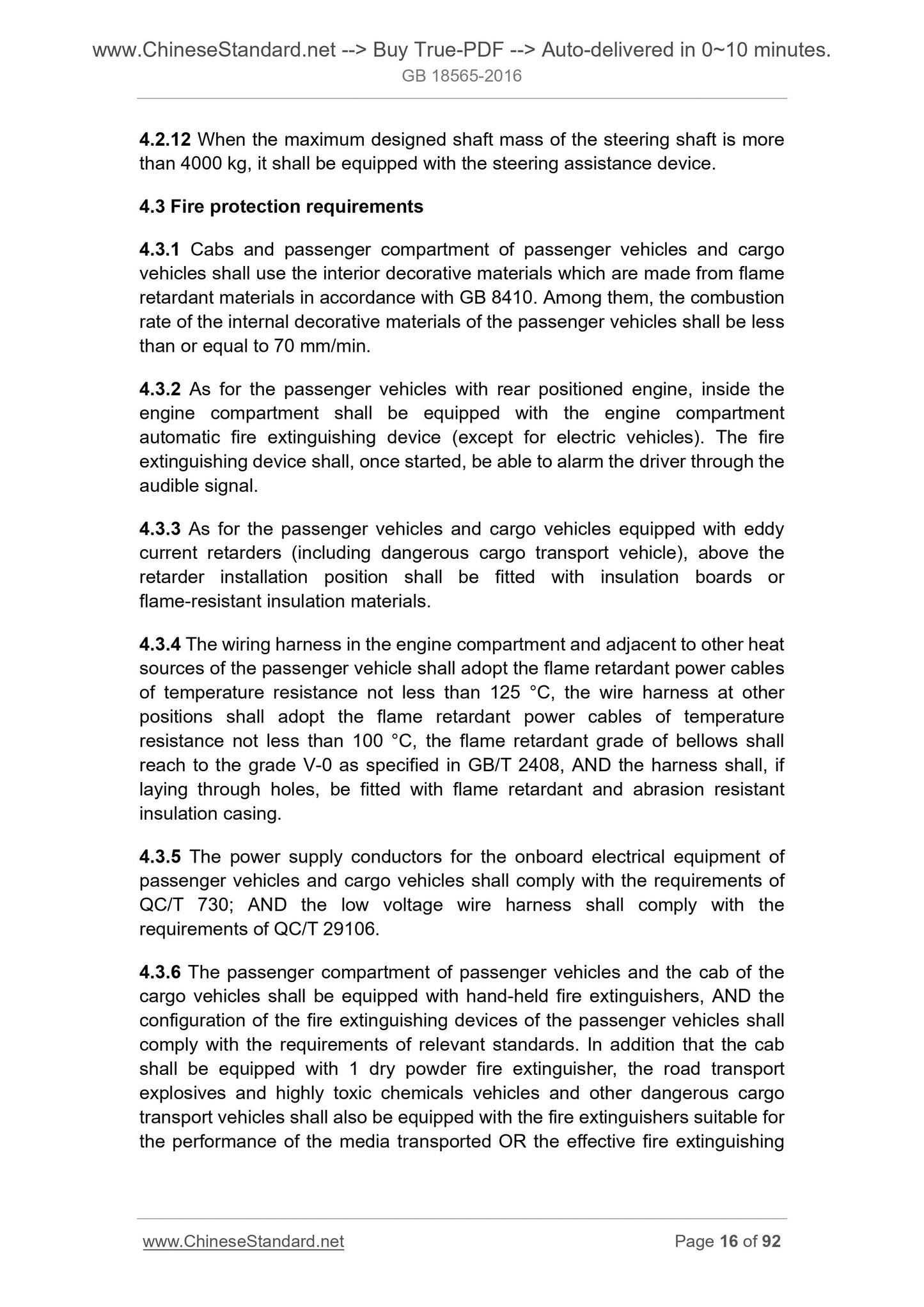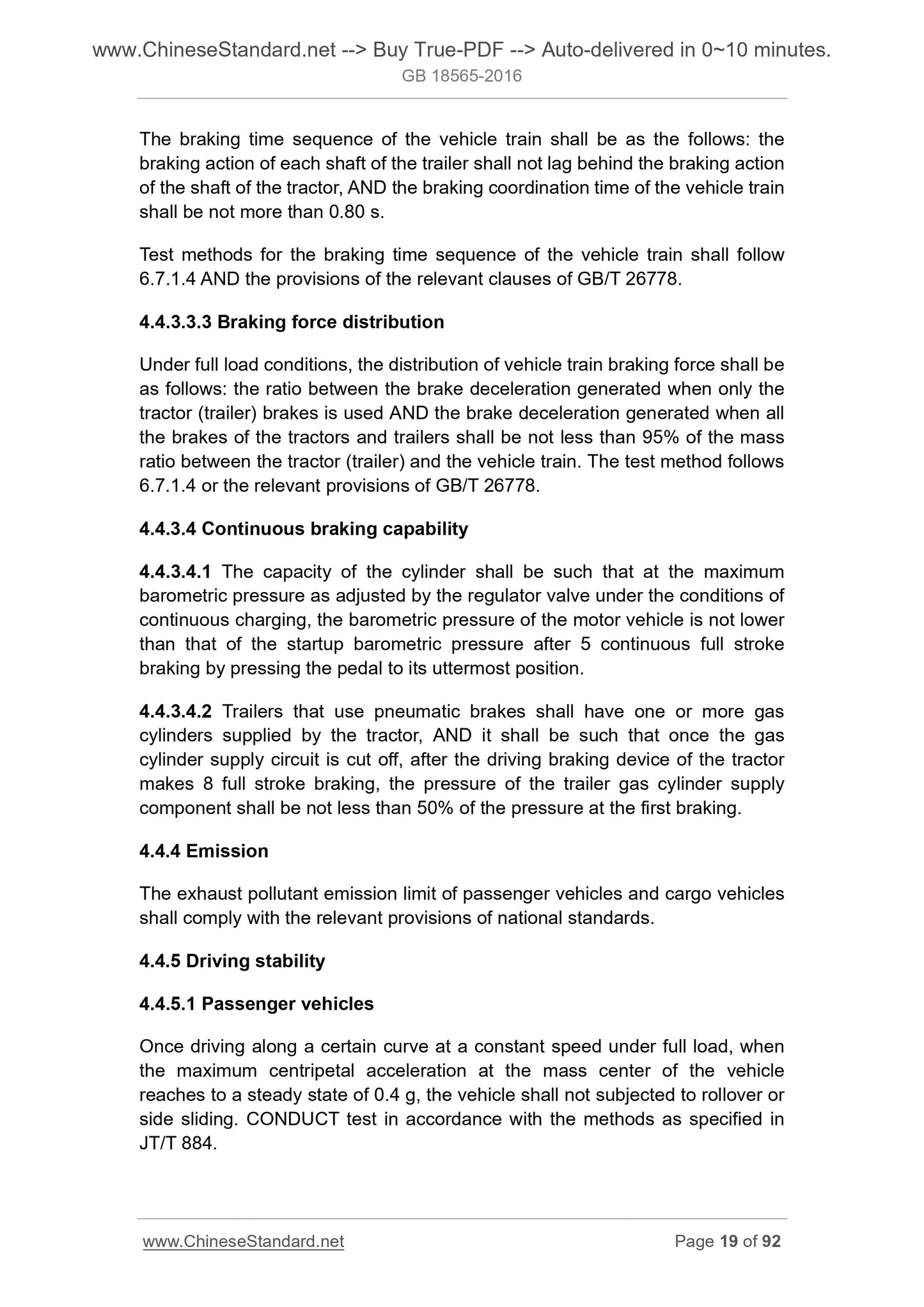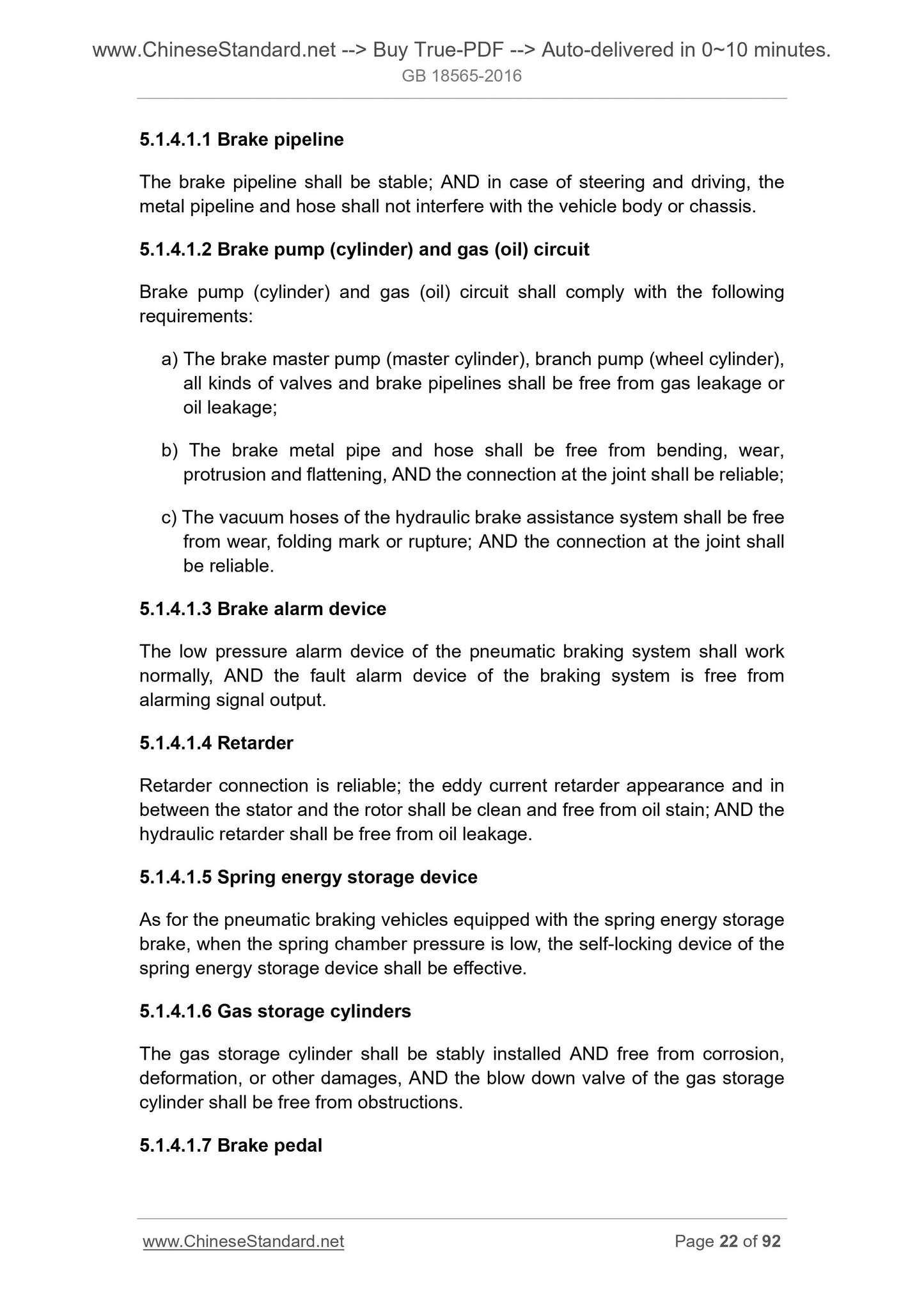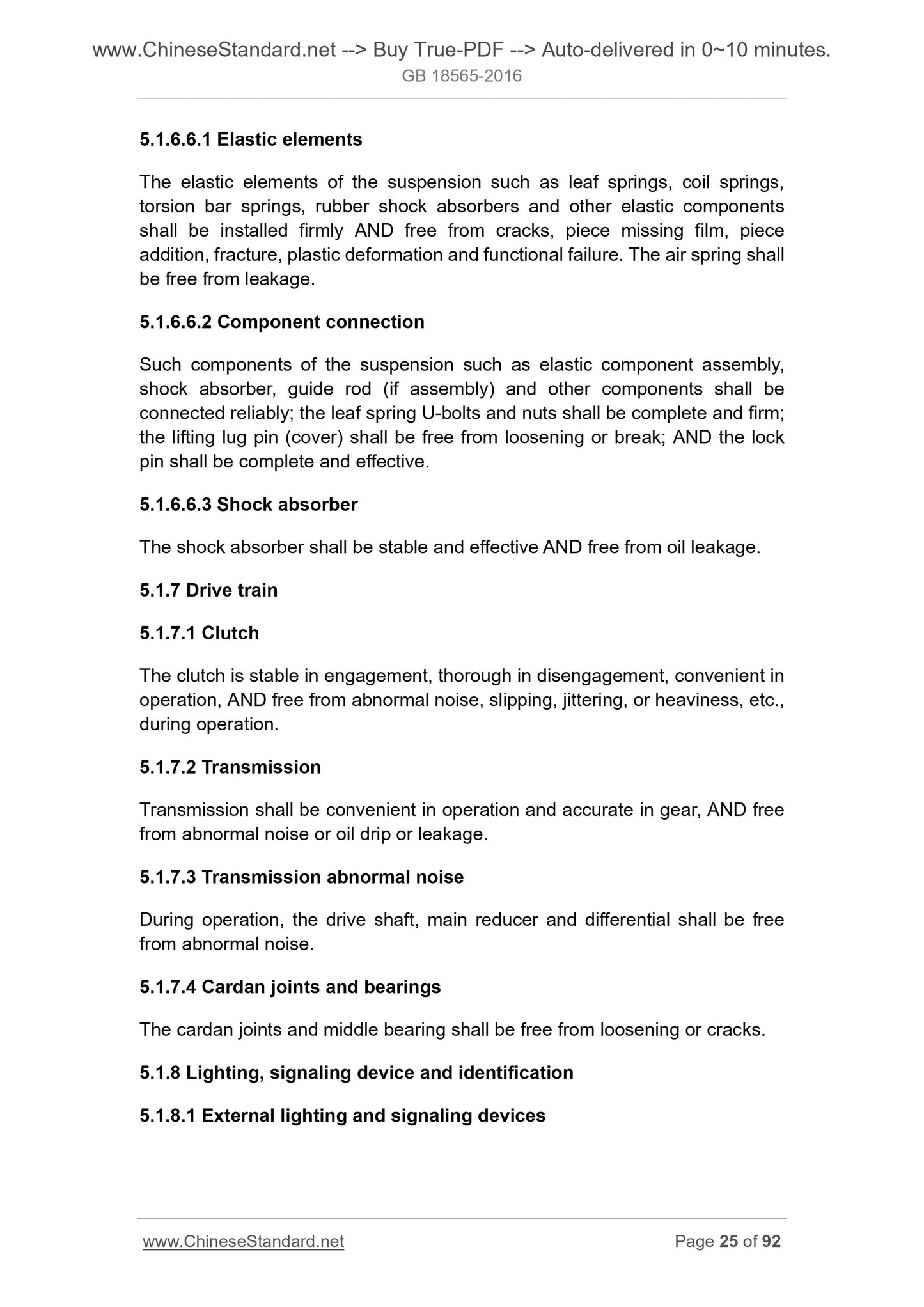1
/
of
12
www.ChineseStandard.us -- Field Test Asia Pte. Ltd.
GB 18565-2016 English PDF
GB 18565-2016 English PDF
Regular price
$150.00
Regular price
Sale price
$150.00
Unit price
/
per
Shipping calculated at checkout.
Couldn't load pickup availability
GB 18565-2016: Composite performance requirement and detecting methods for road transport vehicles
Delivery: 9 seconds. Download (and Email) true-PDF + Invoice.Get Quotation: Click GB 18565-2016 (Self-service in 1-minute)
Newer / historical versions: GB 18565-2016
Preview True-PDF
Scope
This standard specifies the technical requirements for application in roadtransport vehicles and road transport vehicles in use, as well as test methods
of road transport vehicles.
This standard applies to vehicles that are application in road transport vehicles
and vehicles that are engaged in road transport operations, AND the vehicles
engaged in road transport related business such as driver training may make
reference to this standard.
Basic Data
| Standard ID | GB 18565-2016 (GB18565-2016) |
| Description (Translated English) | Composite performance requirement and detecting methods for road transport vehicles |
| Sector / Industry | National Standard |
| Classification of Chinese Standard | R16 |
| Classification of International Standard | 03.220.20 |
| Word Count Estimation | 49,433 |
| Date of Issue | 6/14/2016 |
| Date of Implementation | 2017-01-01 |
| Older Standard (superseded by this standard) | GB 18565-2001 |
| Quoted Standard | GB 1589; GB/T 2408; GB 3847; GB 7258; GB 8410; GB/T 12544; GB 12676; GB 13057; GB 13392; GB/T 13594; GB 14166; GB 14167; GB/T 14172; GB 17578; GB/T 18276-2000; GB 18285; GB 18564.1; GB 18564.2; GB/T 18566; GB/T 19056; GB 19578; GB 20300; GB 20997; GB 21668; GB 21670; GB/T 24545; G |
| Regulation (derived from) | National Standard Announcement No. 8 of 2016 |
| Issuing agency(ies) | General Administration of Quality Supervision, Inspection and Quarantine of the People's Republic of China, Standardization Administration of the People's Republic of China |
| Summary | This standard specifies the technical requirements for applying for road transport vehicles and in-use road transport vehicles, as well as the inspection methods for road transport vehicles. This standard applies to vehicles engaged in road transport operations and vehicles engaged in road transport operations, vehicles engaged in road transport-related business such as driver education, etc. can be implemented with reference to. |
Share
